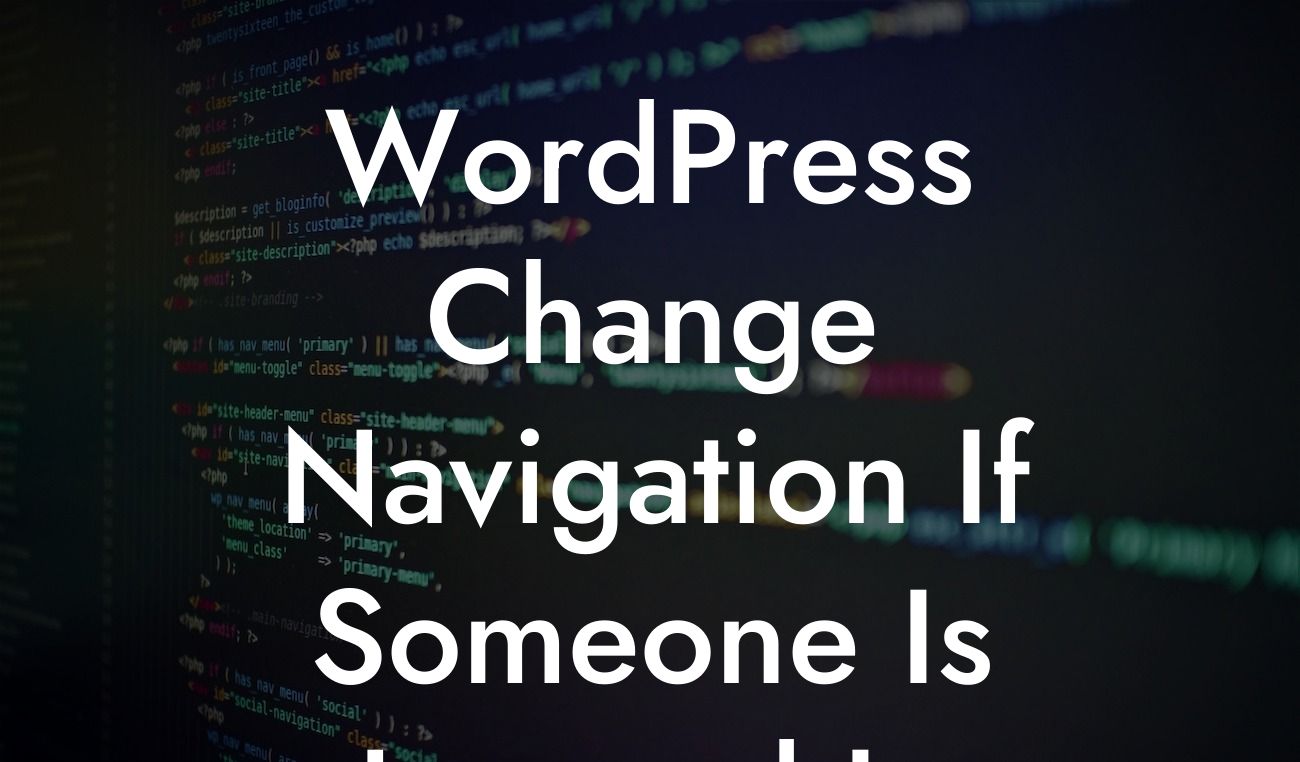WordPress is a powerful platform that empowers small businesses and entrepreneurs to create stunning websites. However, when it comes to customizing certain features, such as navigation menus, things can get a bit tricky. In this article, we delve into the topic of changing your WordPress navigation if someone is logged in. By implementing this functionality, you can offer a personalized experience to your logged-in users, enhance user engagement, and make your small business website stand out from the crowd.
To change your WordPress navigation based on user login status, several methods can be used. Let's explore some of them:
1. Using Conditional Tags:
One popular method involves using conditional tags in your theme's functions.php file. These tags allow you to display different menu items to logged-in users compared to those who are not logged in. With conditional tags like `is_user_logged_in()`, you can easily switch between different navigation menus based on the user's login status. Additionally, you can leverage plugins like 'User Menus' to simplify this process and configure different menus in the WordPress admin dashboard.
2. Customizing with CSS:
Looking For a Custom QuickBook Integration?
Another way to change your navigation is by using CSS. By adding suitable classes or IDs to specific menu items, you can hide or display them based on the user's login status. For instance, you can set the "display: none" property for menu items visible only to logged-in users. This method requires a bit of CSS knowledge, but it offers flexibility and can be easily integrated into any WordPress theme.
3. Using a Plugin:
If you prefer a simpler approach, plugins can save you time and effort. WordPress offers numerous plugins that allow you to customize your navigation menus based on user login status. Plugins like 'Nav Menu Roles' or 'If Menu' provide intuitive interfaces to manage different menus for various user roles or login states. Installing and activating the suitable plugin for your needs can streamline the process and eliminate the need for complex coding or theme modifications.
Wordpress Change Navigation If Someone Is Logged In Example:
Let's consider an example where you want to change your navigation menu for logged-in users. With the help of the 'Nav Menu Roles' plugin, follow these steps:
1. Install and activate the 'Nav Menu Roles' plugin from the WordPress plugin repository.
2. Navigate to the Appearance -> Menus section in your WordPress admin dashboard.
3. Create a new menu or edit an existing one.
4. Assign different roles, such as "logged in" or "logged out", to specific menu items.
5. Customize the visibility of menu items based on the assigned roles.
6. Save your changes and update your site to see the modified navigation menu in action.
By changing your WordPress navigation based on user login status, you can offer a personalized experience to your visitors, enhancing their engagement and satisfaction. Implementing the discussed methods mentioned above can unlock new possibilities for your small business website. For more tips and tricks, make sure to explore other guides on DamnWoo and discover our awesome WordPress plugins designed exclusively for small businesses and entrepreneurs. Supercharge your online presence and unleash the extraordinary today!
Note: This article contains step-by-step instructions and detailed explanations to help you change your WordPress navigation if someone is logged in. Ensure you have a backup of your website before making any modifications, and feel free to seek professional assistance if needed.













